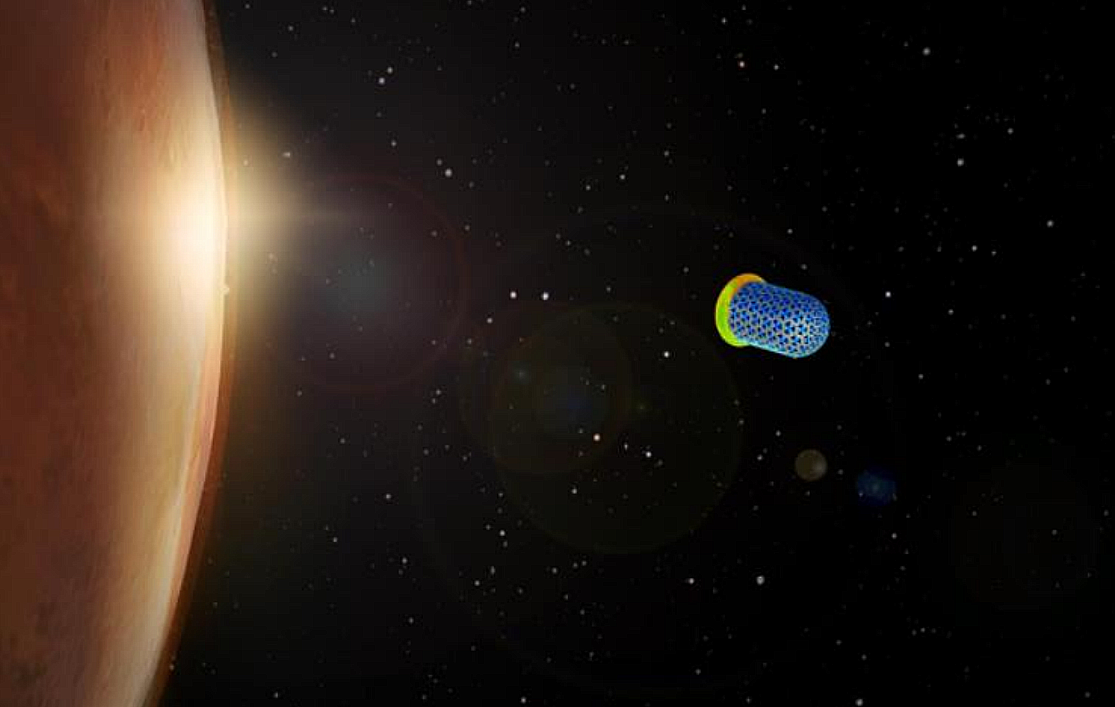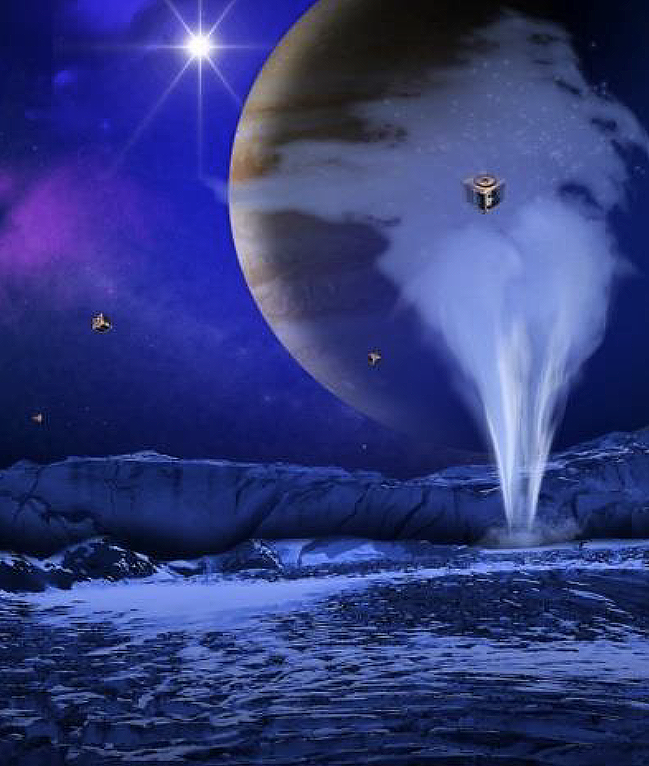Mars Roundtrip Success Enabled by Integrated Cooling through Inductively Coupled LED Emission (MaRS ICICLE)
- Mars roundtrip missions will require improved long-duration storage of cryogenic propellants to enable efficient, flexible, and productive trips.
- A breakthrough mission concept, MaRS ICICLE, proposes an ultra-efficient round-trip Mars mission with zero boil-off of propellants using low-cost, efficient cryogenic liquid storage capable of storing LH2 and LOx in severe thermal environments.
- The MaRS ICICLE concept employs thin, lightweight all-solid-state panels attached to the tank’s deep-space-facing surfaces that utilize Electro-Luminescent Cooling (ELC) technology to reject heat from cold solid surfaces as non-equilibrium thermal radiation.
- To achieve zero boil-off, a storage spacecraft must keep the storage tank’s temperature below the boiling point of the cryogen, requiring excellent reflectivity toward sunlight and thermal radiation, as well as a power-efficient cooling mechanism like ELC.
- The MaRS ICICLE concept has the potential to drastically lower the cost and complexity of propulsion systems for crewed Mars missions and other deep space exploration by allowing spacecraft to refill propellant tanks after reaching orbit rather than launching on a single-use stage.
3 min read
Preparations for Next Moonwalk Simulations Underway (and Underwater)
Aaswath Pattabhi Raman
University of California, Los Angeles
Exploration of Mars has captivated the public in recent decades with high-profile robotic missions and the images they have acquired seeding our collective imagination. NASA is actively planning for human exploration of Mars and laid out some of the key capabilities that must be developed to execute successful, cost-effective programs that would put human beings on the surface of another planet and bring them home safely. Efficient, flexible and productive round-trip missions will be key to further human exploration of Mars. New round-trip mission concepts however need substantially improved long-duration storage of cryogenic propellants in various space environments; relevant propellants include liquid Hydrogen (LH2) for high specific impulse Nuclear Thermal Propulsion (NTP) which can be deployed in strategic locations in advance of a mission. If enabled, such LH2 storage tanks could be used to refill a crewed Mars Transfer Vehicle (MTV) to send and bring astronauts home quickly, safely, and cost-effectively. A well-designed cryogenic propellant storage tank can reflect the vast majority of photons incident on the spacecraft, but not all. In thermal environments like Low Earth Orbit (LEO), there is residual heating due to light directly from the Sun, sunlight reflected off Earth, and blackbody thermal radiation from Earth. Over time, this leads to some of the propellant molecules absorbing the requisite latent heat of vaporization, entering the gas phase, and ultimately being released into space to prevent an unsustainable build-up of pressure in the tank. This slow “boil-off” process leads to significant losses of the cryogenic liquid into space, potentially leaving it with insufficient mass and greatly limiting Mars missions. We propose a breakthrough mission concept: an ultra-efficient round-trip Mars mission with zero boil off of propellants. This will be enabled by low-cost, efficient cryogenic liquid storage capable of storing LH2 and LOx with ZBO even in the severe and fluctuating thermal environment of LEO. To enable this capability, the propellant tanks in our mission will employs thin, lightweight, all-solid-state panels attached to the tank’s deep-space-facing surfaces that utilize a long-understood but as-yet-unrealized cooling technology known as Electro-Luminescent Cooling (ELC) to reject heat from cold solid surfaces as non-equilibrium thermal radiation with significantly more power density than Planck’s Law permits for equilibrium thermal radiation. Such a propellant tank would drastically lower the cost and complexity of propulsion systems for crewed Mars missions and other deep space exploration by allowing spacecraft to refill propellant tanks after reaching orbit rather than launching on the much larger rocket required to lift the spacecraft in a single-use stage. To achieve ZBO, a storage spacecraft must keep the storage tank’s temperature below the boiling point of the cryogen (e.g., < 90 K for LOx and < 20 K for liquid H2). Achieving this in LEO-like thermal environments requires both excellent reflectivity toward sunlight and thermal radiation from the Earth, Mars and other nearby bodies as well as a power-efficient cooling mechanism to remove what little heat inevitably does leak in, a pair of conditions ideally suited to the ELC cooling systems that will makes our full return-trip mission to Mars a success.





